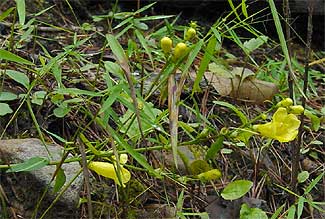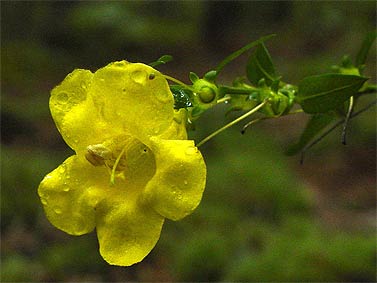
 Entire-leaved False Foxglove
Entire-leaved False FoxgloveAureolaria laevigata
A 1-4' plant with short-stalked, opposite, lance-shaped to ovate leaves, occasionally shallowly lobed or toothed. The 1" yellow flower has a cylindrical corolla with 5 spreading, nearly equal lobes. The short calyx is 5-pointed. Blooms July-October in open woods slopes, roadsides. Is semi-parasitic on the roots of oak trees.
Action, Medical Uses, and Dosage.—Diaphoretic, antiseptic, and sedative. Used principally in febrile and inflammatory diseases; a warm infusion produces a free and copious perspiration in a short time. Dose of the infusion, from 1 to 3 fluid ounces.
History.—This is a most elegant plant, found growing in airy copses, pine ridges, and barren woods and mountains from Canada to Georgia and Kentucky, and flowering in August and September. The whole plant is used. Water or spirit extracts its virtues. It has not been analyzed. There are several varieties of the species, which probably possess analogous virtues.